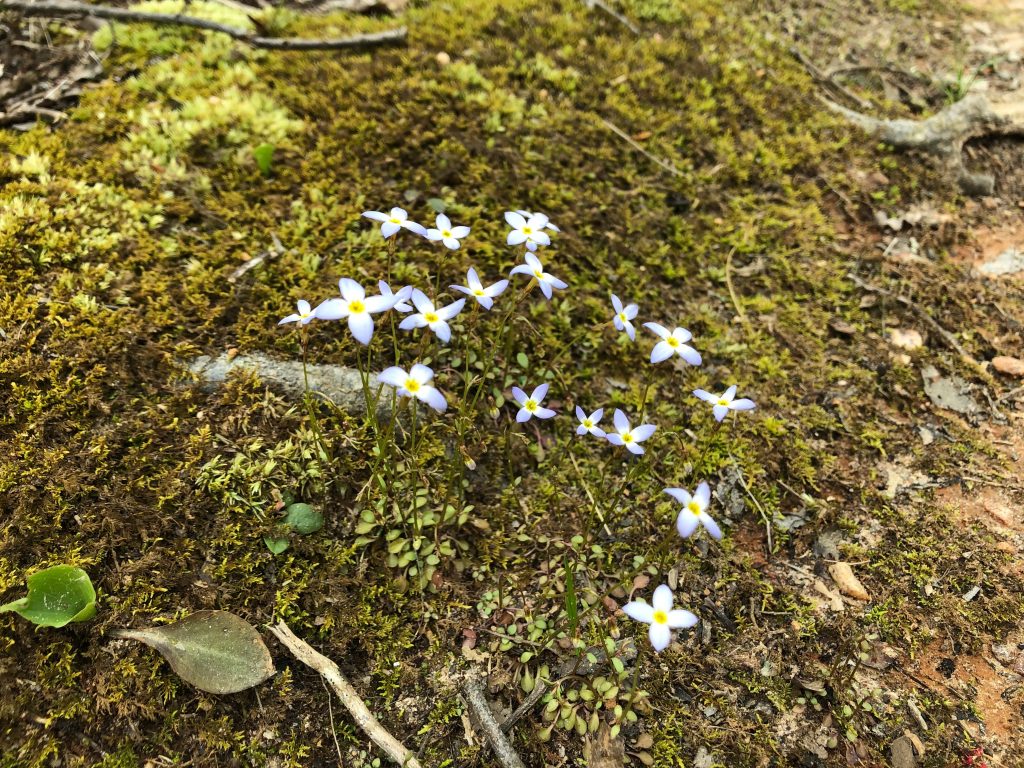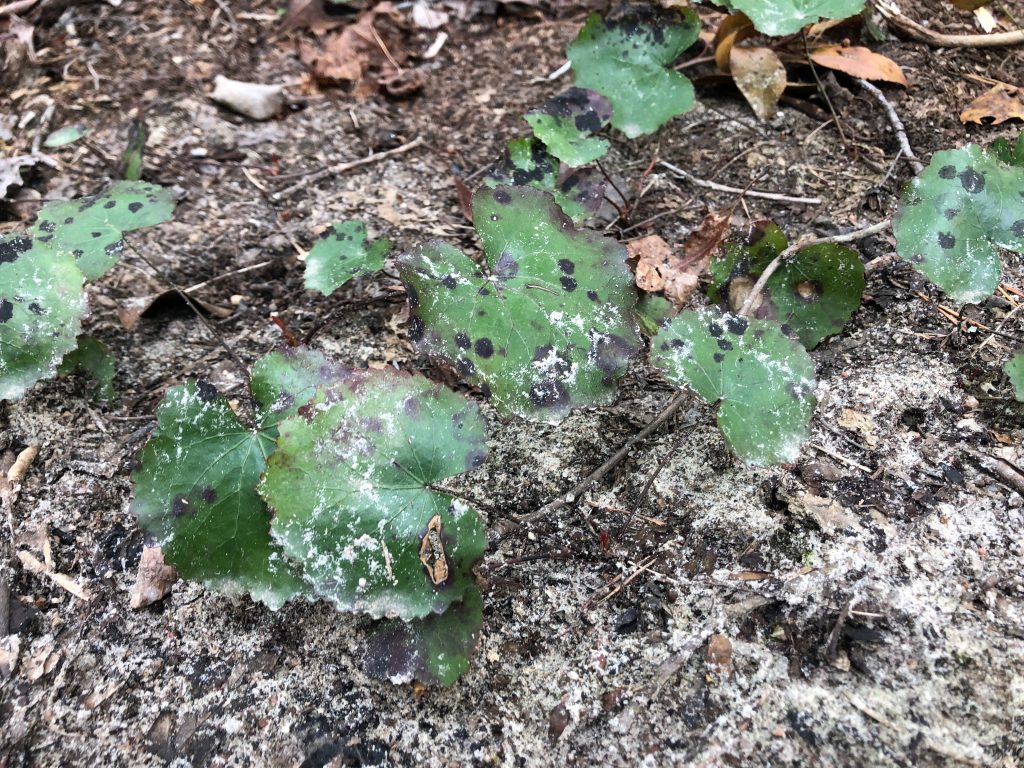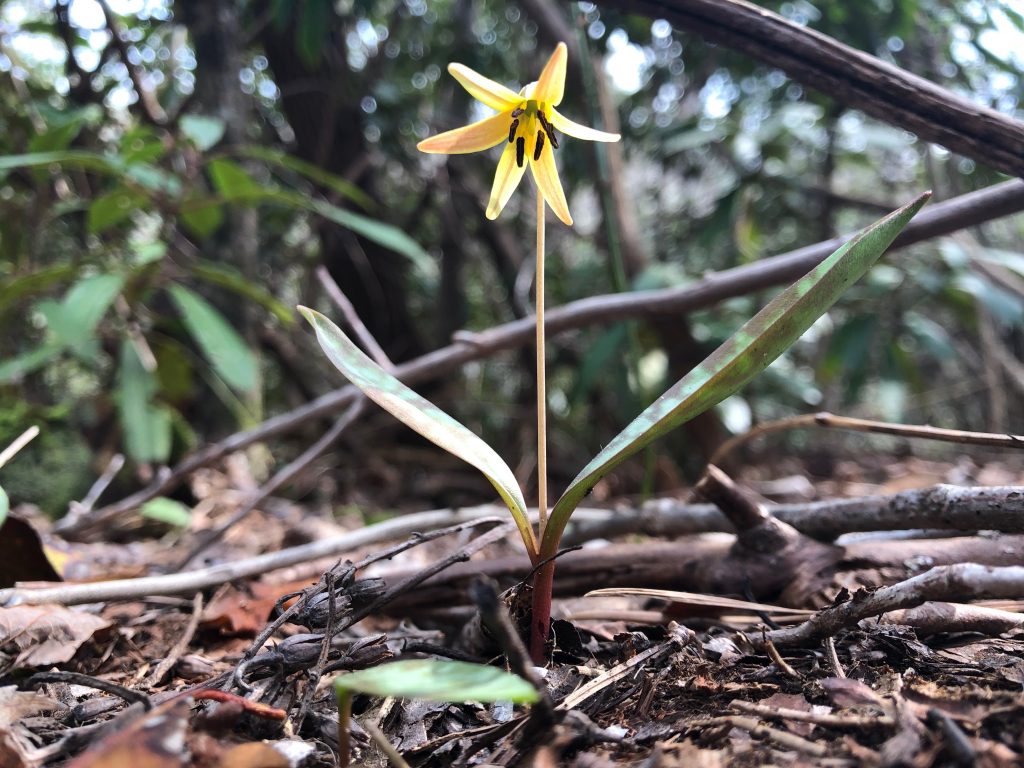What you’re looking for won’t be found easily. In the blink of an eye, a quick glance upward, or even the extra focus needed to step over that root, they will be gone. Footsteps pass them by daily, pausing not even for a moment to examine their hidden qualities. Transitory beauty remains rooted in fertile soil, lifting their pedals high for the eye to behold. By a small patch of green by bubbling brook, Spring has dawned her familiar wardrobe once again. Layering herself with sweaters of green and yellow, she has begun the process of pulling upward the promise of new beginnings. Stooping low, I paused to congratulate her for another successful start to the season.

My eyes wandered to a small patch of radiant light blue flora. Folded emerald moss served as a bed for the flowers to rest upon, only now their petals were stretching upward to meet the day. Bluets, or Quaker ladies (Houstonia caerulea, L.) are a perennial species native to eastern Canada and the eastern United States. The terminal flowers invite you in with mauve-tipped pedals, moving downward into a crystal-clear blue base, and wrapping you up with a fluorescent center of yellow. Quaker ladies grow best in acidic soils in relatively shaded forests, often reaching eight inches high in best conditions and capable of covering large expanses. At Hanging Rock, they are often observed towering over moss-covered patches of the understory such as these.

Off to their left, a solitary downy yellow violet claimed its space in the sunlight. Downy yellow violets (Viola pubescens, Ait.) are another perennial species found all across the continental United States. The downy yellow violet is softly hairy, growing anywhere from 9-12 inches tall. Casting a brilliant glow across the forest floor, the

Closer to the creek, and covered slightly in

Searching for a Galax flower would have proven futile; however, some species require that level of dedication to find Spring’s graceful touch. Trout lilies (Erythronium americanum, Sm.) are a colony-forming ephemeral flower dwelling in woodland habitats all across North America. The gray-green leaves mottled with brown and gray litter the forest floor almost as prominently as the decomposing canopy from Fall. Due to the mottled patterning of brown and gray, each leaf supposedly resembes the coloration of brook trout (Salvelinus fontinalis), another native species to Hanging Rock. After some searching, I discovered the recurved yellow nodding flower. The bronzy exterior will eventually pull away to reveal the iridescent interior with four to five extending maroon stamens. Needless to say, the discovery of this flower sent a stream of joy cascading down the waterfall of my soul.

All of this life existed in one small patch. Should I have focused on the problems I left behind at home, or even dwelled too much in my head, I would never have discovered Spring’s brilliance in this space. Up beyond the clouds, down below the trees, the world is radiating with color and beauty, proceeding along its course without our attention. Let’s look for a change. Who knows what we will see.
“Her colors change to mark the passing of the days. No Earthly sight can match the beauty she displays”